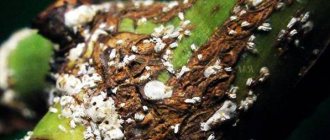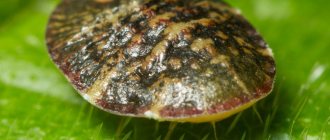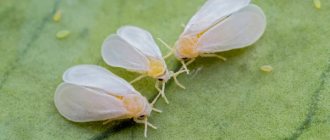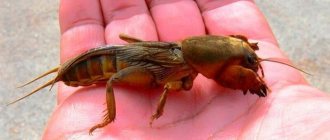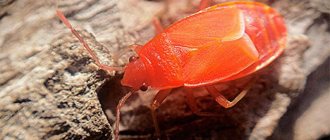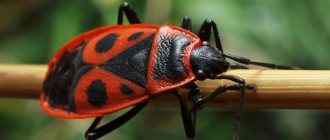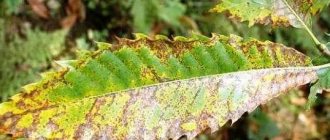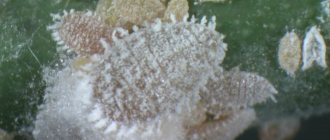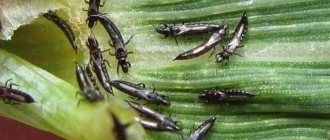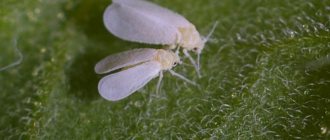- August 22, 2018
- Diseases and pests
- Legina Marina
If a sticky coating appears on your plants, then you need to immediately inspect the bottom of each leaf. The fact is that such symptoms very often indicate the presence of scale insects. Unlike most small pests, it is clearly visible on the surface of the leaf blade. It is the scale insect that is different in that it secretes a sticky liquid that seals the stomata and prevents the plant from breathing. At the same time, this film is an excellent breeding ground for fungi and bacteria. Today we’ll talk about what to do with scale insects on indoor plants and how to fight them. The photo will help you quickly identify this pest and select adequate control methods.
general description
What does this insect look like? This is a tiny creature that can destroy even a large tree. Its body is covered with a dense protective shell, so the scale insects can be mistaken for hard growths on the plant. It’s not for nothing that scale insects have a second name – garden turtle. But they are not at all as harmless as they might seem at first glance. In a couple of weeks, the voracious creatures will destroy any plant.
Every gardener should know well what scale insects look like on indoor plants and how to fight them. The photo shows us females up to 5 mm in length. They are the ones that are found motionless on plants and look like droplets of frozen resin. Males do not grow more than 3 mm and move freely around plants using legs or wings.
Types of scale insects that parasitize houseplants
The sizes and colors of scale insects of different species vary greatly.
The most common types:
- Californian - has a round shield. In the center, females have 2 rusty-brown skins with a white border. Males have a dark stripe across them.
- Cactus. Males are orange, females are pale yellow, with a round shield.
- Palm. The scutellum of females is translucent, flat, round in shape. The larvae are elongated, white and fluffy. Males are pale yellow.
There are thousands of species of scale insects, it is impossible to describe them all. Everyone has more in common than they have different things. They are distinguished by their gluttony and rapid reproduction. Larvae and females damage plants.
Reason for appearance
In the garden everything is clear: young females and males fly freely and cover considerable distances. How does scale insect appear on indoor plants? How to fight? We will look at photos of effective drugs below, but for now we will look at ways of penetration into your home. This is usually soil, plant debris and water. And most often, parasites come to your house with new plants.
They usually begin to fight them when they appear en masse, without previously noticing them. Therefore, a new generation of scale insects spreads into neighboring pots. And only sudden, massive shedding of leaves, inhibition of growth or death of plants can become a signal for the owner that it is time to show maximum care.
Reproduction of the Decembrist
Schlumbergera stems are long shoots divided into segments. Propagation is carried out by cuttings, carefully separated from the main stem by unscrewing. Breeding time is spring, early June. The cuttings must be slightly dried (to prevent rotting), then placed in a container with a damp peat-sand mixture. Provide greenhouse conditions (cover with a transparent cap or jar), but do not forget to ventilate. Propagation by cuttings has a beneficial effect on the condition of the mother plant. Separation of segments stimulates the growth of new shoots and abundant flowering.
Threatened
Scale insects can appear on indoor plants no matter how well you care for them. Moreover, it affects any plant, including succulents. But this pest also has its favorites, which are attacked first. We are talking about orchids and laurels. Palm trees and ivy do not avoid scale insects. With great pleasure, the scale insect feasts on Cyperus, Aucuba and other exotics. The usual household inhabitants are also under attack: chlorophytums, geraniums and hippeastrums.
What is noteworthy is that the pest most often appears in winter and early spring. This is evidenced by numerous amateur photos. How to deal with scale insects on indoor plants? It is necessary to improve the immunity of the plantings. After all, at this time the plants are most weakened, which becomes a decisive factor for the pest. It is much easier for them to harm flowers that are not able to resist. Therefore, follow the recommended conditions, and closer to spring add special immunostimulants to the soil. This could be inexpensive succinic acid.
Damage caused
The larvae wait in the wings, feeding on cell sap. With severe damage, plants become covered with a coating of pest bodies, and it is almost impossible not to notice this. Autumn is coming in your home garden, the leaves are flying away.
The scale insect and its larvae can live and feed on indoor plants all year round, and the insects reproduce very quickly. They reproduce by laying eggs, which contributes to rapid population growth. At the initial stage, the larvae are very mobile, especially the males. But they live only a few days, and the female will feed and breed for several months.
Do not confuse with false scale insects
This is another pest that appears very similar in appearance. These insects belong to the same order, but they are separated into a separate family. They differ from scale insects in that the latter do not have a waxy shell. Their eggs and larvae are protected by the dry skin of the dying female after laying. In the first stages, small insects move quickly, and this applies to both true and false scale insects. But if you see that a sticky patch begins to form on the leaves, there is no longer any doubt: this is what you are looking at.
Signs of insect parasitism
If you find that the leaves are sticky, it means that scale insects have settled. They may still be invisible, but they already give off a secret. As the insects grow, brown, green, and yellow tubercles are found along the veins of the leaves. These are scale insects that are attached to the leaves, usually from below, but can be from above.
The leaves become spotted and then turn yellow. Insects drink the juice, so the buds on the flowers fall off and the development of the stems is incorrect. Signs of rapid plant death: growth gradually stops, leaves fall off, and the bush dries out.
Preventive actions
Below we will talk about how to deal with scale insects on indoor plants, but for now let’s look at what can be done to prevent damage. The following measures will help protect your flowers:
- Constant control of the soil in plant pots. It must be of high quality and clean.
- Dead and weak shoots must be cut off in a timely manner. This will preserve the strength of the plant and prevent rotting. Be sure to disinfect the sections.
- Ventilate the room frequently and maintain the required air humidity.
- Quarantine all new plants for a month. A similar technique should be used when returning your plants from their summer residence in the garden, in the fresh air. There are quite a lot of chances to become infected with scale insects in the garden.
Prevention
You can protect plants from pest attack by regularly ventilating the premises and maintaining a balance of light and water. When purchasing new plants, it is important to adhere to quarantine: keep them separately for 2-4 days.
Important rules for florists and gardeners:
- Carefully check the leaves regularly for signs of parasites or traces of their presence.
- Before contacting plants, be sure to wash your hands, as scale insects can be transferred to them.
- Wash the leaves under running water more often (the scale insect does not like moisture), the soil must be covered while doing this.
- Do not place the flower in the open sun, this can only harm it. It is enough to just choose a warm place.
Scale insects are a dangerous pest for garden and indoor plants , but with timely detection, you can avoid losses. Carry out preventive measures regularly, do not forget about the general rules of care: watering, fertilizing, strengthening the root system.
If you find an error, please select a piece of text and press Ctrl+Enter.
Fighting methods
The more pests manage to multiply, the more difficult it will be to get rid of them, and the more severe the damage caused. And the first remedy for scale insects on indoor plants is to pick them from the leaves by hand. It should be noted that the fight against these creatures is long and very difficult. A durable shell reliably protects pests from any damage. Therefore, first of all, we examine the axils and leaves on both sides. A small flat growth is a pest. It must be carefully torn from the plant and destroyed. To make this task easier, you can use a toothbrush. This is only the first, but a very important step. Because by leaving pests on the stems, you give them a chance to reproduce.
Hygiene measures
The fight against scale insects on indoor plants begins with treatment with a soap solution. Most pests cannot tolerate this. Moreover, both the placement of the pots and the vessels themselves will need to be treated. It is best to replace the soil by first calcining the fresh soil mixture.
To prepare a concentrated soap solution you will need 100 g of grated laundry soap and a liter of water. After complete dissolution, add 200 ml of kerosene. All this must be thoroughly mixed until a white foam forms. Before use, the mixture must be diluted in 10 liters of water. After wiping with this solution, the plant is given a warm shower a few hours later, after which it is placed in a warm place to dry. This is one of the gentlest remedies, but it can be quite effective. True, there is a chance that the larvae will survive and give birth again. For complete victory, 2 to 3 treatments may be required at intervals of 7 days. The fight against scale insects on indoor plants can be long and difficult, so let's look at more reliable means.
Traditional methods
So, we cleaned the plant from pests with a toothbrush, washed it with soapy water and dried it well. Now we consider further how to deal with scale insects on indoor plants using available means:
- Garlic solution gives good results. To do this, add 5 crushed cloves to a glass of water and leave in a dark place. After this, strain through cheesecloth and spray the plant with the solution. You need to carry out a number of treatments to get a good result.
- Pepper infusion. Another advantage is that the solution can be prepared for future use. To do this, boil 50 g of pepper for 5 minutes in 500 g of water. Let it sit for 24 hours and the infusion is ready.
- Celandine. Almost all pests cannot tolerate it. You will need to pour 300 g of dry celandine herb with a liter of boiling water. Leave for 24 hours, then spray the diseased plant.
- Oil film. Insects are living creatures that require air. To block its access, you can lubricate the affected areas with sunflower oil using a brush. The procedure is repeated every day until the insects completely disappear.
The effectiveness of folk remedies is quite difficult to assess. They are safe for humans, which is a big plus. But often gardeners are faced with the fact that the result is temporary and comparable to manual collection of pests. Within a few days, the larva hatches, and the surviving individuals lay new eggs. And now a new generation of pests is destroying your flowers. Of course, on a garden scale it is more difficult to deal with them. But if you have 3 - 5 pots at home, then you can check every leaf every day and not give the pest a single chance.
Caring for the Decembrist at home
Caring for the Decembrist is simple, just remember its origin. Imagine a tropical forest: humidity, diffused light, no drafts, constant temperature all year round, nutritious soil and warm rains.
Create conditions close to tropical and your Decembrist will delight the eye with flowering not only in winter, but also in summer. Even if there is no need to force the Decembrist to bloom in warm weather, then for the sake of the health of the plant it is still recommended to create a semblance of the tropics at home.
Humidity can be provided by regular watering and spraying with warm, soft water. There is nothing complicated here: you need to water the Decembrist regularly, not allowing the earthen ball in the pot to dry out, and spray it daily, especially when the heating is on.
Diffused lighting can be created by placing it on an eastern or western window sill, or in the back of the room so that direct sunlight does not fall on the Decembrist stems. The scorching sun burns the leaves, and the plant begins to hurt, there is no time for flowering. Avoid placing a pot with Decembrist on a southern window sill. Decembrist stems turn yellow from sunburn, and the stem segments dry out and fall off.
Do not grow Decembrist in corridors and near windows that open to ventilate the room - drafts are guaranteed to undermine the health of Schlumbergera. Remember, the air around the Decembrist should stagnate.
If there is a need to grow Decembrist on a balcony or loggia, then select a shady place for the plant, protected from the wind.
When the Decembrist forms buds and blooms, it is not recommended to rearrange or rotate the pot - the plant can throw off the buds and leave you without the “sweet”.
If there is a need for Decembrist to bloom repeatedly throughout the year, then after flowering the plant is moved to a cool place to rest. It is the alternation of periods of rest and flowering that guarantees repeated flowering of the Decembrist.
We recommend reading these articles:
Fertilizer for raspberries in spring to increase yield
Why whitewash trees in spring?
Fertilizer for strawberries in spring to increase yield
The tropical forest is warm all year round, which means that the comfortable temperature for the Schlumberger zygocactus is from +20°C to +25°C. This is the temperature in the phase of active growth and flowering, and for the dormant period a temperature of about +13-15°C is recommended.
Feed the Decembrist 2 times with complex fertilizer for flowers, making the concentration 2 times less than recommended. Zygocacti are very sensitive to large doses of fertilizers, so you should not overfeed Decembrist, especially during the dormant period.
We use insecticides
A photo of a scale insect on indoor plants makes it clear that it can cause serious damage to any flower, even to the point of its complete death. Therefore, at the first sign of defeat, you need to get down to business. And the most effective way of control is the use of insecticides, that is, treatment with chemicals. But here, too, there is no guarantee that you will get by with just one treatment, because combating this pest requires a systematic approach. The choice of drugs today is quite large. But the most effective can be considered those that are designed to combat dipterous insects, including the Colorado potato beetle.
Why does the Decembrist shed its buds?
The flower drops its buds - as a rule, mites are to blame for this. If a spider mite caused damage, then the fallen leaves should have a yellow base with rusty-brown spots. Look carefully. If there are no mites or signs of them, slightly shake the Decembrist from side to side, it may have problems with the roots.
The root system is the weakest part of the Decembrist, it easily rots and dies off at the slightest mistake during care. If the plant wobbles, then it must be urgently transplanted into new soil and into a clean, disinfected old pot or into a new one.
All bad, acidic soil and affected roots are removed. Rinse the roots well under running warm water (40 - 50 degrees) to make sure they are in order.
It is a misconception that Decembrist loses leaves and flowers from lack of moisture. Therefore, they mistakenly begin to increase watering. The flower will begin to wither rather than shed its segments.
"Aktara"
If you have tried traditional methods and are still looking for options on how to get rid of scale insects on indoor plants, then it’s time to move on to more radical measures. This drug affects the nervous system of insect pests, causing paralysis of the respiratory and nervous systems. The product is available in ampoules, which is very convenient.
This product destroys plant-feeding insects at all stages. The drug works equally well when applied to the leaves and watered at the root. That is, it accumulates in the vegetative parts of the plant, which makes it resistant to precipitation.
What is the danger of the pest?
The insect pest poses a significant threat to home flowers; it can not only spoil the green mass of the plant, but also cause the development of pathologies.
Female scale insects absorb the juice of flowers, clinging to the branches, roots, leaves and trunks of plantings, which leads to their rapid death.
Typical damage caused by the parasite:
- Sucking out the sap and replacing it with toxic secretions, which leads to a deterioration in photosynthesis and the death of leaves.
- Production of honeydew (a sweet secretion that accumulates dust and attracts ants), which becomes a source of development of viral and fungal infections.
- Promoting the active development of growths (rounded plaques of green, brown and yellow shades), which leads to deformation of healthy tissues and hypertrophy at the cellular level.
Scale insects actively secrete a sugary secretion on which saprophytic fungi are located, resulting in the formation of blackhead or honeydew on the plant. This disrupts not only the decorative appearance of the flower, but also the processes of its development and growth.
"Aktellik"
And we continue to talk about how to fight scale insects on plants. "Actellik" is a popular insecticide that allows you to quickly deal with garden parasites. The drug "Actellik" CE, that is, a concentrated emulsion packaged in ampoules of 2 ml, contains the active ingredient pirimiphos-methyl. It can affect the pest in the following ways:
- Through outer shells.
- Through the digestive organs.
- through the respiratory tract.
The emulsion is widely used for indoor plants. It is non-toxic to people and pets when used correctly. Today this is one of the best means to combat scale insects.
What indoor plants are at risk?
Most often, insects settle on the following plants:
- ficus trees of all types;
- palms, especially fan palms;
- citrus fruits;
- orchids;
- sheflerakh.
Insects do not leave hibiscus, dracaenas, oleander, yucca, and anthurium with their attention. By damaging the protective shell, pests allow fungi to easily penetrate plant tissue through wounds.
To defeat the infection, indoor flowers are treated with the biological product “Fitoflavin”, which destroys almost all fungal diseases. Dosage – 2 ml per 1 liter of water.
"Fitoverm"
Experienced gardeners are well acquainted with this drug. It perfectly helps to cope with a wide variety of pests of both garden and potted plants. The drug must be diluted in a proportion of 1 ml per 200 ml of water. Fitoverm is not a highly toxic drug for humans and does not carry the risk of serious poisoning. This is one of its important advantages, along with its high efficiency in the fight against parasites. This is especially important since the drug is used in a residential area where other family members are located.
"Fufanon"
This is the most popular drug used to treat cultivated and ornamental plants. Even in the garden he is able to remain active for two weeks. And if we talk about greenhouses and house plants, then the drug will retain its original concentration for up to a month. This is a huge plus, since you will not have to repeat the treatment after the larvae hatch. There is enough time to destroy all generations. With the help of this drug, the fight against scale insects on indoor plants becomes quite simple.
Its active substance malathion is highly toxic. This is a contact drug that has an effect on parasites upon direct contact with their bodies, respiratory and digestive organs. Of course, extreme care must be taken to ensure that pets and fish, as well as family members, are not harmed during processing.

